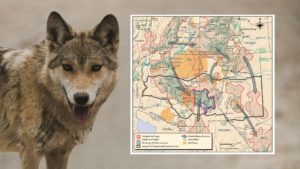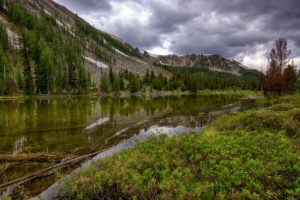For Immediate Release, June 17, 2025
Contact: Adam Bronstein, adam@westernwatersheds.org, (541) 595-8034
Historic Law Protecting Beavers on Public Lands in Oregon Heads to Governor’s Desk for Signature
SALEM, Ore. — In a landmark move for wildlife and watershed protection, the Oregon Senate yesterday passed House Bill 3932, the first law in the nation to prohibit recreational and commercial beaver trapping on federal public lands within impaired watersheds. The bill, which passed the House earlier this session, now heads to the Governor’s desk.
This new law marks a critical turning point for the recognition of beavers as ecosystem engineers whose dam-building restores wetlands, slows water, filters pollutants, and creates crucial habitat for fish and wildlife. By targeting watersheds identified as polluted under the Clean Water Act—classified as Category 4 or 5 by the Department of Environmental Quality—the legislation directs state agencies to maintain a map of protected areas where killing beavers is no longer permitted. Over 100,000 miles of rivers and streams in the state would initially enjoy new protections.
“This is a monumental step for Oregon, for our watersheds, and for the idea that beavers are far more valuable when left alive,” said Adam Bronstein, Oregon Director for Western Watersheds Project. “Beavers are essential to healthy stream ecosystems and the wildlife that depend on them. We should be doing everything in our power to protect and work with beavers.”
The law restricts beaver trapping and hunting on public lands within these sensitive watershed areas or within 200 feet of rivers and streams, and establishes nonlethal coexistence as the preferred strategy for mitigating conflicts. It includes provisions to allow state or federal land managers to intervene in cases of infrastructure damage, though only after nonlethal measures have been considered.
By elevating the ecological value of beavers, the law sets a new precedent for states across the West, where the species is still widely trapped on public lands despite its importance to hydrology, biodiversity, and climate resilience.
Yet conservationists caution that the work is far from over.
While the bill protects beavers in areas where water quality is already impaired, it includes a mechanism to remove protections once those goals are met—potentially allowing the killing to resume in newly restored watersheds.
“This bill is a breakthrough, but it also reflects the political limits of the moment,” Bronstein said. “It doesn’t close all public lands to beaver trapping, which is what the science demands. And it creates a cycle where protections can be rolled back just as ecosystems begin to recover. We’ll keep pushing to break that cycle and ensure these protections are made permanent.”
Western Watersheds Project applauds Oregon lawmakers for taking bold action. Beavers will now receive vital protections where they’re most needed—and this law lays the groundwork for more comprehensive reform in the future.
About Western Watersheds Project
Western Watersheds Project is a nonprofit conservation organization working to protect and restore wildlife and watersheds across the American West. Our mission is to confront the root causes of ecosystem degradation, including public lands livestock grazing, and to champion science-based solutions that prioritize biodiversity, clean water, and climate resilience.
###
BACKGROUND
Beavers (Castor canadensis) are widely recognized by scientists as keystone species and powerful natural allies in climate and watershed restoration. Their dams slow water, recharge aquifers, trap sediment, improve water quality, and create wetlands that support fish, amphibians, birds, and pollinators. Beaver ponds also buffer against drought and reduce wildfire risk by maintaining moist, fire-resistant habitat zones.
Streams with active beaver populations show greater biodiversity, improved water storage, and more stable hydrology compared to streams without them (Bouwes et al., 2016; Pollock et al., 2003; Goldfarb, 2018). Beavers are increasingly being reintroduced across the U.S. and Europe to repair degraded watersheds and help landscapes adapt to climate change.
Recent studies also show that beaver wetlands serve as natural firebreaks. During high-intensity wildfires, riparian zones with active beaver populations remain greener and more hydrated than surrounding landscapes, offering refuge for wildlife and slowing the spread of fire. One study found that areas with beaver dams experienced three times less wildfire damage than nearby areas without them (Fairfax & Whittle, 2020). As the West faces escalating fire seasons, beavers are increasingly viewed as a low-cost, nature-based wildfire mitigation tool.
Despite this, beavers are still routinely killed—especially on public lands—due to pressure from fur trappers and livestock interests. Trappers target them for pelts and castoreum. Ranchers often blame beavers for flooding roads or irrigation ditches, even though low-cost, proven nonlethal tools like pond levelers and culvert protectors are widely available (Boyles & Savitzky, 2008).
In Oregon, over 1,000 beavers have been legally killed each year under general trapping rules and outdated nuisance policies—even as the state faces record drought, fish die-offs, and collapsing riparian ecosystems.






